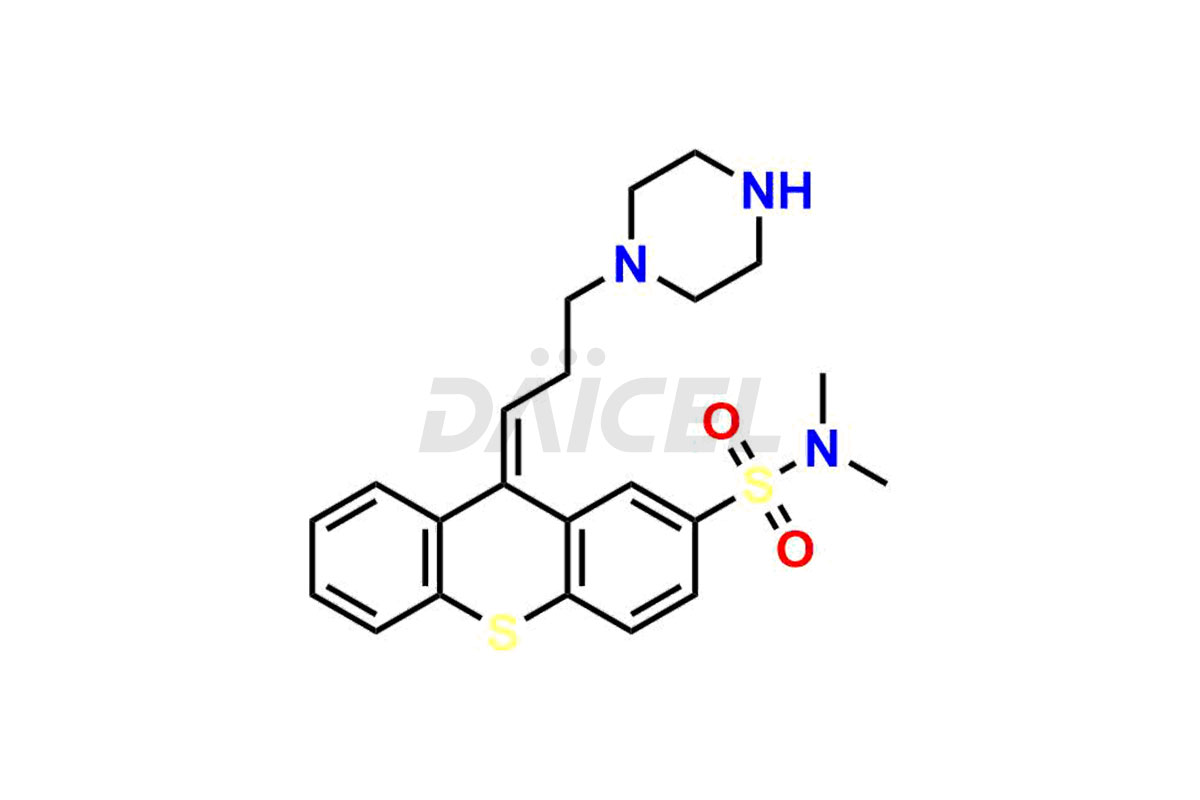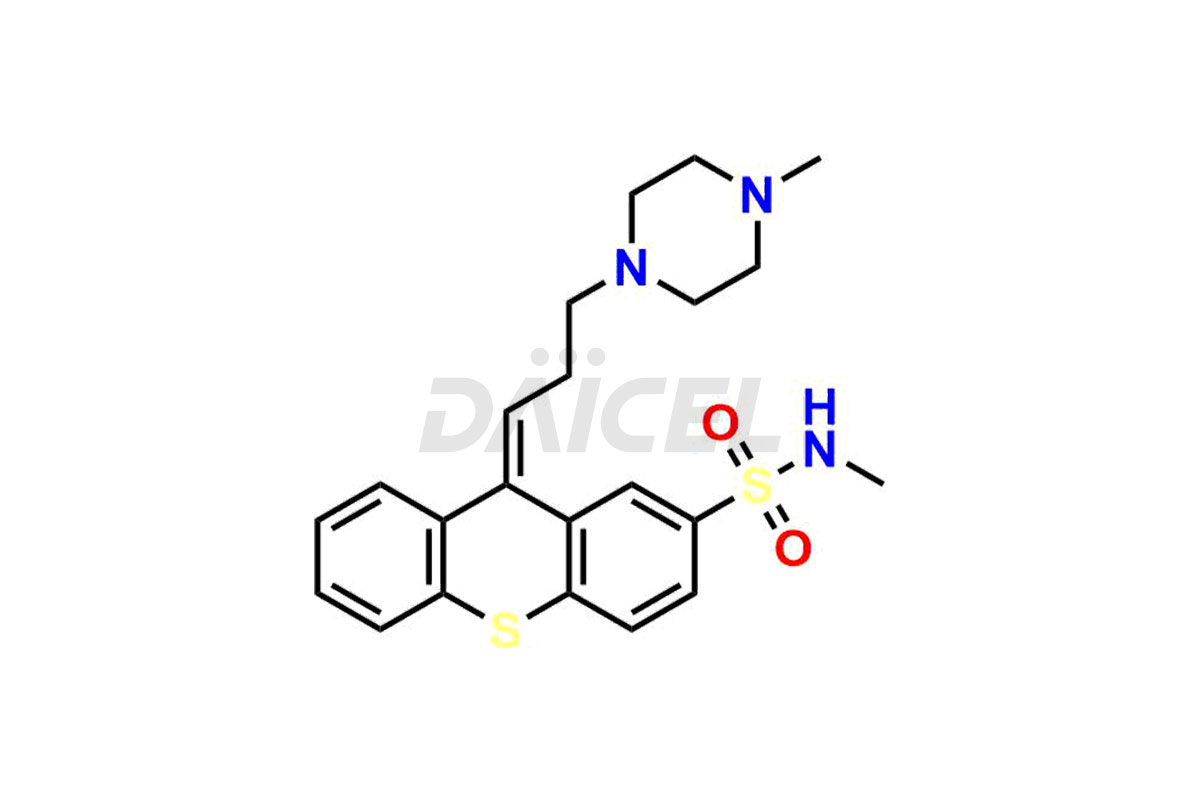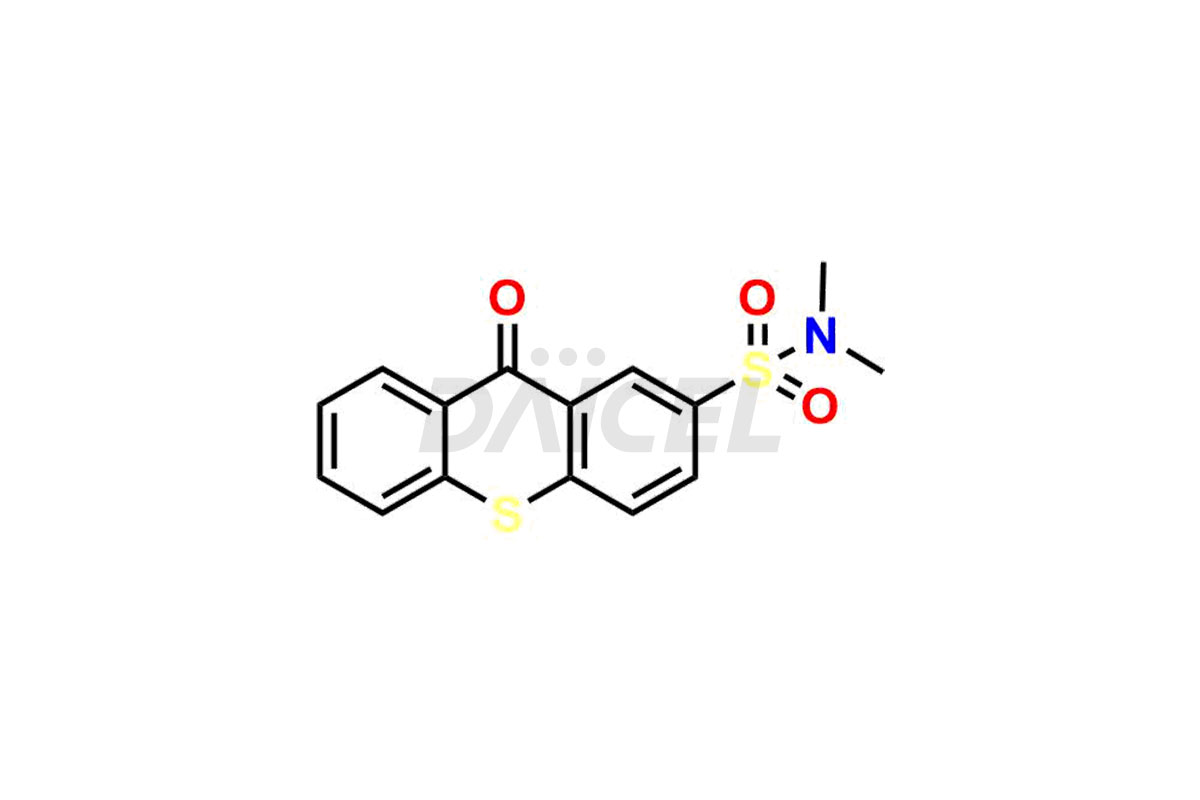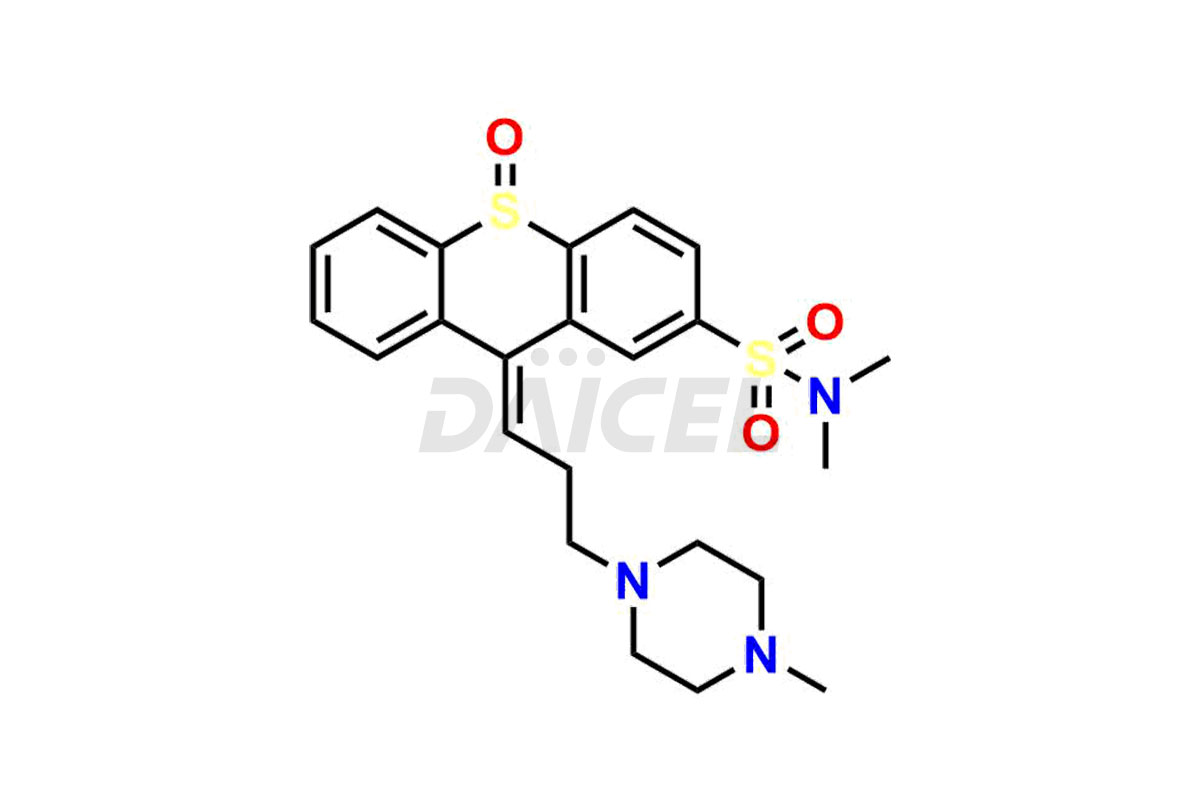Thiothixene
General Information
Thiothixene Impurities and Thiothixene
Daicel Pharma is a reliable source for synthesizing high-quality Thiothixene impurity standards, specifically N-desmethyl thiothixene (Mixture of E/Z isomers), Thiothixene impurity 1, Thiothixene impurity (DHTS impurity), (E)-Thiothixene, and more. These impurities are essential in accurately analyzing the active pharmaceutical ingredient, Thiothixene quality, stability, and biological safety. Additionally, Daicel Pharma offers a customized synthesis of Thiothixene impurities for global delivery to meet the specific needs of our customers.
Thiothixene [CAS: 5591-45-7] belongs to a class of medications known as conventional antipsychotics. It alleviates the symptoms of schizophrenia.
Thiothixene: Use and Commercial Availability
Thiothixene is an antipsychotic for treating schizophrenia, a psychiatric disorder characterized by disrupted or atypical thinking, diminished interest in life, and intense or inappropriate emotions. It treats psychotic disorders and shares a distinct chemical and pharmacological resemblance with piperazine derivatives of the phenothiazine series. Thiothixene is available under Navane, which contains the active ingredient, Thiothixene.
Thiothixene Structure and Mechanism of Action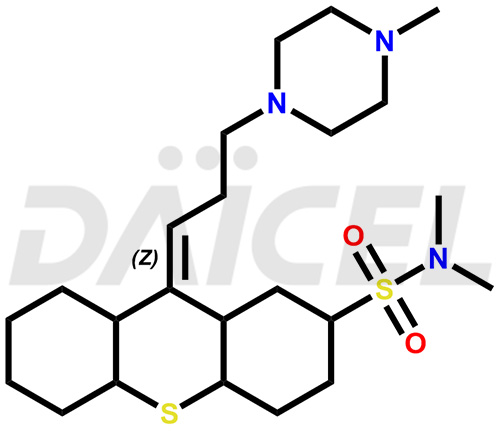
The chemical name of Thiothixene is N, N-Dimethyl-9-[3-(4-methyl-1-piperazinyl)propylidene]-9H-thioxanthene-2-sulfonamide. Its chemical formula is C23H29N3O2S2, and its molecular weight is approximately 443.6 g/mol.
Thiothixene blocks postsynaptic receptors with anxiolytic, anti-depressive, and anti-aggressive properties.
Thiothixene Impurities and Synthesis
During the preparation1 of Thiothixene, impurities can form due to the utilization of starting materials, intermediates, or reagents. These impurities diminish the drug’s effectiveness and pose risks to patients. Therefore, it is crucial to control their levels closely.
Daicel Pharma supplies a Certificate of Analysis (CoA) for Thiothixene impurity standards, which includes N-desmethyl thiothixene (Mixture of E/Z isomers), Thiothixene impurity 1, Thiothixene impurity (DHTS impurity),(E)-Thiothixene and more. The CoA is from an analytical facility adhering to current Good Manufacturing Practices (cGMP). It includes comprehensive characterization data such as 1H NMR, 13C NMR, IR, MASS, and HPLC purity2. Additionally, upon request, we can provide additional characterization data such as 13C-DEPT. Daicel Pharma also can generate unknown impurities or degradation products of Thiothixene. A complete characterization report accompanies each delivery.
References
FAQ's
References
- Tretter, James R.; Bloom, Barry M., Process for the preparation of [3-(4-methylpiperazinyl) propylidene-1] triphenyl phosphorane or N, N-dimethyl-9[3-(4-methyl-1-piperazinyl) propylidene] thioxanthene-2-sulfonamide, Pfizer, Chas., and Co., Inc., GB1118460A, July 3, 1968
- Wong, C. K.; Cohen, D. M.; Munnelly, K. P., High-pressure liquid chromatographic determination of thiothixene in pharmaceutical formulations, Journal of Pharmaceutical Sciences, Volume: 65, Issue: 7, Pages: 1090-2, 1976
Frequently Asked Questions
Why is it vital to analyze impurities in Thiothixene?
Analyzing impurities in Thiothixene is vital to ensure the drug's safety and efficacy. They can impact the drug's quality, stability, and security, potentially reducing its effectiveness or causing harm to patients. Analyzing impurities helps identify their sources, enabling manufacturers to take measures to control their formation.
What measures can manufacturers take to control impurity levels in Thiothixene?
Manufacturers can implement various measures to control impurity levels in Thiothixene, such as utilizing high-quality starting materials, optimizing reaction conditions, implementing effective purification techniques, and monitoring impurity levels throughout the preparation process.
Which solvent is beneficial in the analysis of Thiothixene impurities?
Methanol is a solvent that aids in analyzing numerous impurities in Thiothixene.
What are the recommended storage temperature conditions for Thiothixene impurities?
Thiothixene impurities should be stored at a controlled room temperature between 2-8 °C or as indicated on the Certificate of Analysis (CoA).
Note: Products protected by valid patents by a manufacturer are not offered for sale in countries having patent protection. The sale of such products constitutes a patent infringement, and its liability is at the buyer's risk.


